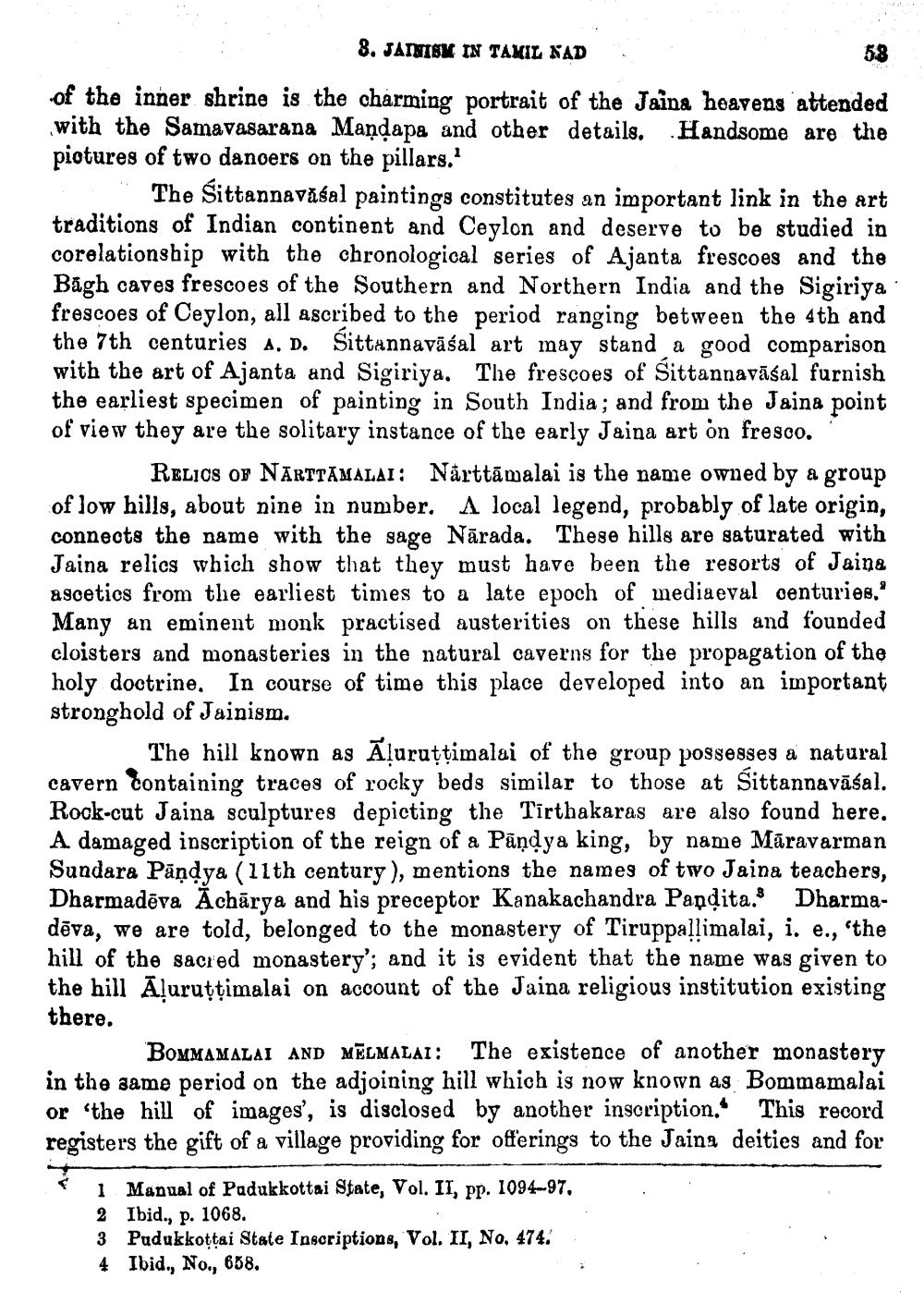________________
8. JATUSM IN TAMIL NAD of the inner shrine is the charming portrait of the Jaina heavens attended with the Samavasarana Mandapa and other details. Handsome are the piotures of two danoers on the pillars."
The Sittannaväśal paintings constitutes an important link in the art traditions of Indian continent and Ceylon and deserve to be studied in corelationship with the chronological series of Ajanta frescoes and the Bagh caves frescoes of the Southern and Northern India and the Sigiriya · frescoes of Ceylon, all ascribed to the period ranging between the 4th and the 7th centuries A. D. Sittannavāśal art may stand a good comparison with the art of Ajanta and Sigiriya. The frescoes of Sittannavāśal furnish the earliest specimen of painting in South India, and from the Jaina point of view they are the solitary instance of the early Jaina art on fresco.
Relics or NARTTĀMALAI: Narttāmalai is the name owned by a group of low hills, about nine in number. A local legend, probably of late origin, connects the name with the sage Nārada. These hills are saturated with Jaina relics which show that they must have been the resorts of Jaina ascetics from the earliest times to a late epoch of mediaeval oenturies." Many an eminent monk practised austerities on these hills and founded cloisters and monasteries in the natural caverns for the propagation of the holy doctrine. In course of time this place developed into an important stronghold of Jainism.
The hill known as Āļuruttimalai of the group possesses a natural cavern containing traces of rocky beds similar to those at Sittannavāśal. Rock-cut Jaina sculptures depicting the Tirthakaras are also found here. A damaged inscription of the reign of a Pândy a king, by name Māravarman Sundara Pāņdya (11th century), mentions the names of two Jaina teachers, Dharmadēva Āchārya and his preceptor Kanakachandra Pandita. Dharmadēva, we are told, belonged to the monastery of Tiruppallimalai, i. e., 'the hill of the sacred monastery'; and it is evident that the name was given to the hill Āļuruțţimalai on account of the Jaina religious institution existing there.
BomMAMALAI AND MĒLMALAI: The existence of another monastery in the same period on the adjoining hill which is now known as Bommamalai or “the hill of images', is disclosed by another inscription. This record registers the gift of a village providing for offerings to the Jaina deities and for
1 Manual of Padukkottai State, Vol. II, pp. 1094–97, 2 Ibid., p. 1068. 3 Pudukkottai State Inscriptions, Vol. II, No. 474. 4 Ibid., No., 658.




